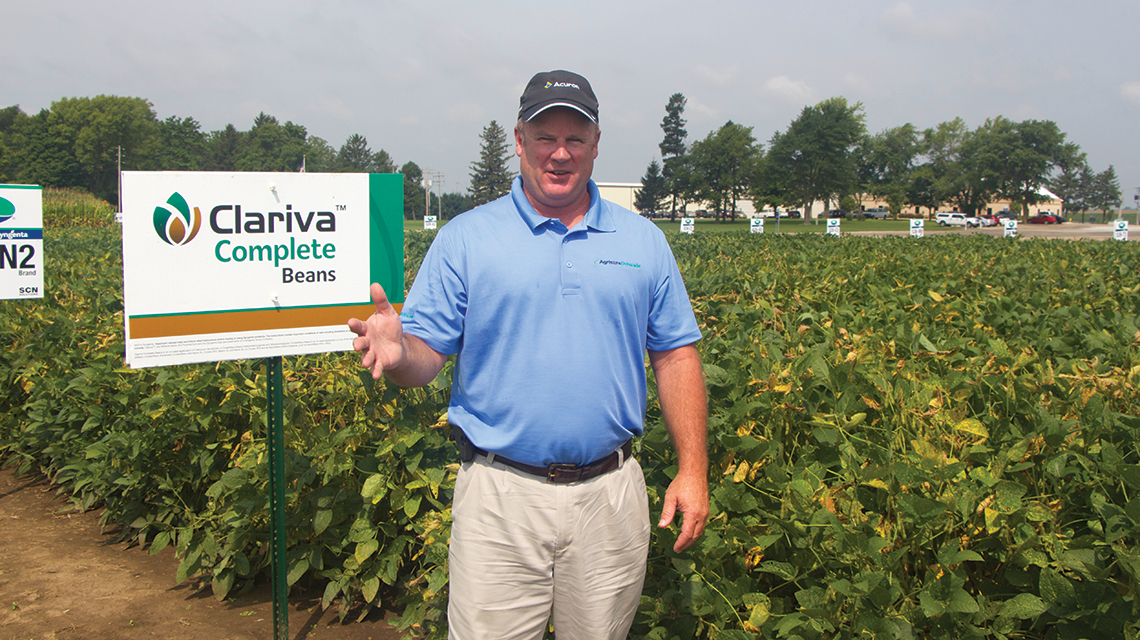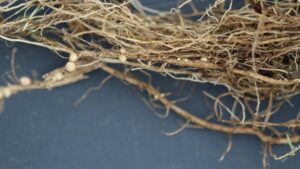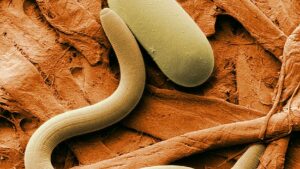As part of the series highlighting biologicals, beneficial insects are now being delivered on the seed.
Today, farmers can plant a field of seeds with the expectation that every seed planted will emerge within a 24- to 48-hour window. The technologies that make this possible are seed treatments, coatings and polymers. One of the more recent advancements is the application of beneficial insects or parasites to seed to help protect it when its most vulnerable and throughout the growing season.
That’s one of the primary differences between a biological and a synthetic seed treatment; biologicals tend to be active and longer-lasting than synthetic treatments because, in some cases, it’s a living organism that’s being applied. But that’s also the piece of the puzzle that’s caused the industry the most trouble as it can die and become ineffective if conditions are not conducive for it to survive.
To help farmers battle soybean cyst nematode, Syngenta is treating seeds with Clariva, which is comprised of parasites and those parasites only known food source are soybean cyst nematodes.
Each seed is treated with more than 1 million spores, so as soon as the seed hits the ground, these parasites begin looking for soybean cyst nematodes, explains Tom Kelley a Syngenta agronomic services representative based in east central Illinois. These parasites, called Pasteuria nishizawae, actually drill a hole in the back of the nematodes and colonize in the cyst.
Kelley says the good thing about Clariva is that its efficacy is not affected by temperature, moisture or pH. “Unlike some other products, there’s no baggage because soybean cyst nematode is its only food source,” he says.
But Syngenta is not the only one using a biological seed treatment for the control of soybean cyst nematode; Bayer CropScience is, too. Poncho/VOTiVO employs a biological mode of action and
a systemic agent.
According to Brad May, Bayer CropScience SeedGrowth strategic business lead, the dual protection results in a healthier plant establishment and more uniform crop because VOTiVO creates a living barrier that prevents nematodes from causing damage. While it’s not a beneficial insect, it is a naturally-occuring soil bacteria that becomes a living barrier, occupying space and limiting the number of receptor sites which could be occupied by plant pathogens such as nematodes.
Increased Scrutiny
As seed treatments and crop protection products come under increased scrutiny, those within agriculture must adapt and look for innovative solutions to maintain the yield gains realized to-date.
Mike McFatrich, BASF global business director for seed solutions, encourages companies to be innovative in finding solutions to help farmers deal with these challenges.
“One of the areas the BASF has pioneered and developed to deal with grubs is the use of beneficial nematodes, which are microscopic worms that occur naturally and that we concentrate,” he says. “This [increased scrutiny] means that we have to be more creative. We have to understand the situation with regard to the climate in which we are working, and I think that we have solutions that can contribute to dealing with regulatory changes.”













